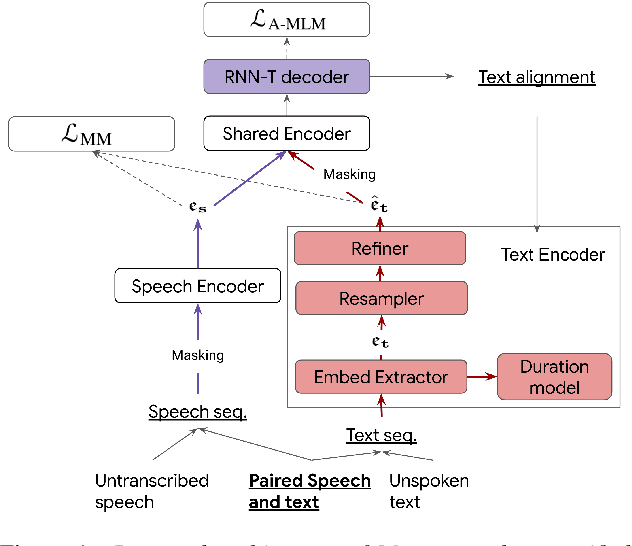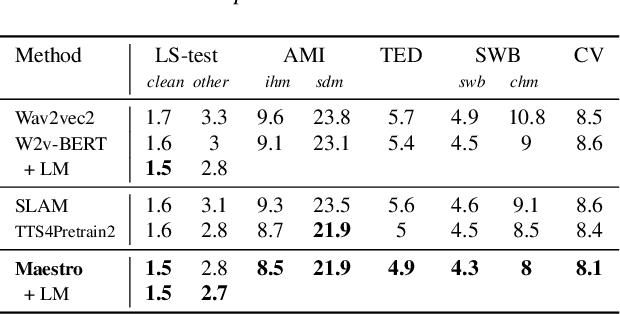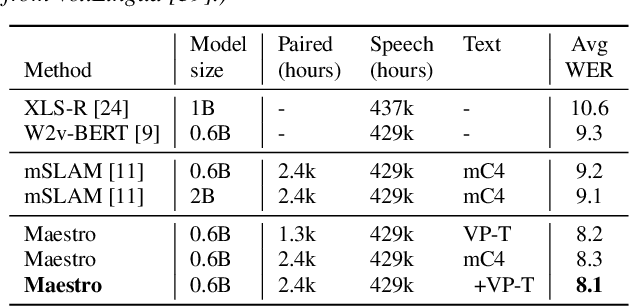MAESTRO: Matched Speech Text Representations through Modality Matching
Paper and Code
Apr 07, 2022



We present Maestro, a self-supervised training method to unify representations learnt from speech and text modalities. Self-supervised learning from speech signals aims to learn the latent structure inherent in the signal, while self-supervised learning from text attempts to capture lexical information. Learning aligned representations from unpaired speech and text sequences is a challenging task. Previous work either implicitly enforced the representations learnt from these two modalities to be aligned in the latent space through multitasking and parameter sharing or explicitly through conversion of modalities via speech synthesis. While the former suffers from interference between the two modalities, the latter introduces additional complexity. In this paper, we propose Maestro, a novel algorithm to learn unified representations from both these modalities simultaneously that can transfer to diverse downstream tasks such as Automated Speech Recognition (ASR) and Speech Translation (ST). Maestro learns unified representations through sequence alignment, duration prediction and matching embeddings in the learned space through an aligned masked-language model loss. We establish a new state-of-the-art (SOTA) on VoxPopuli multilingual ASR with a 11% relative reduction in Word Error Rate (WER), multidomain SpeechStew ASR (3.7% relative) and 21 languages to English multilingual ST on CoVoST 2 with an improvement of 2.8 BLEU averaged over 21 languages.
 Add to Chrome
Add to Chrome Add to Firefox
Add to Firefox Add to Edge
Add to Edge